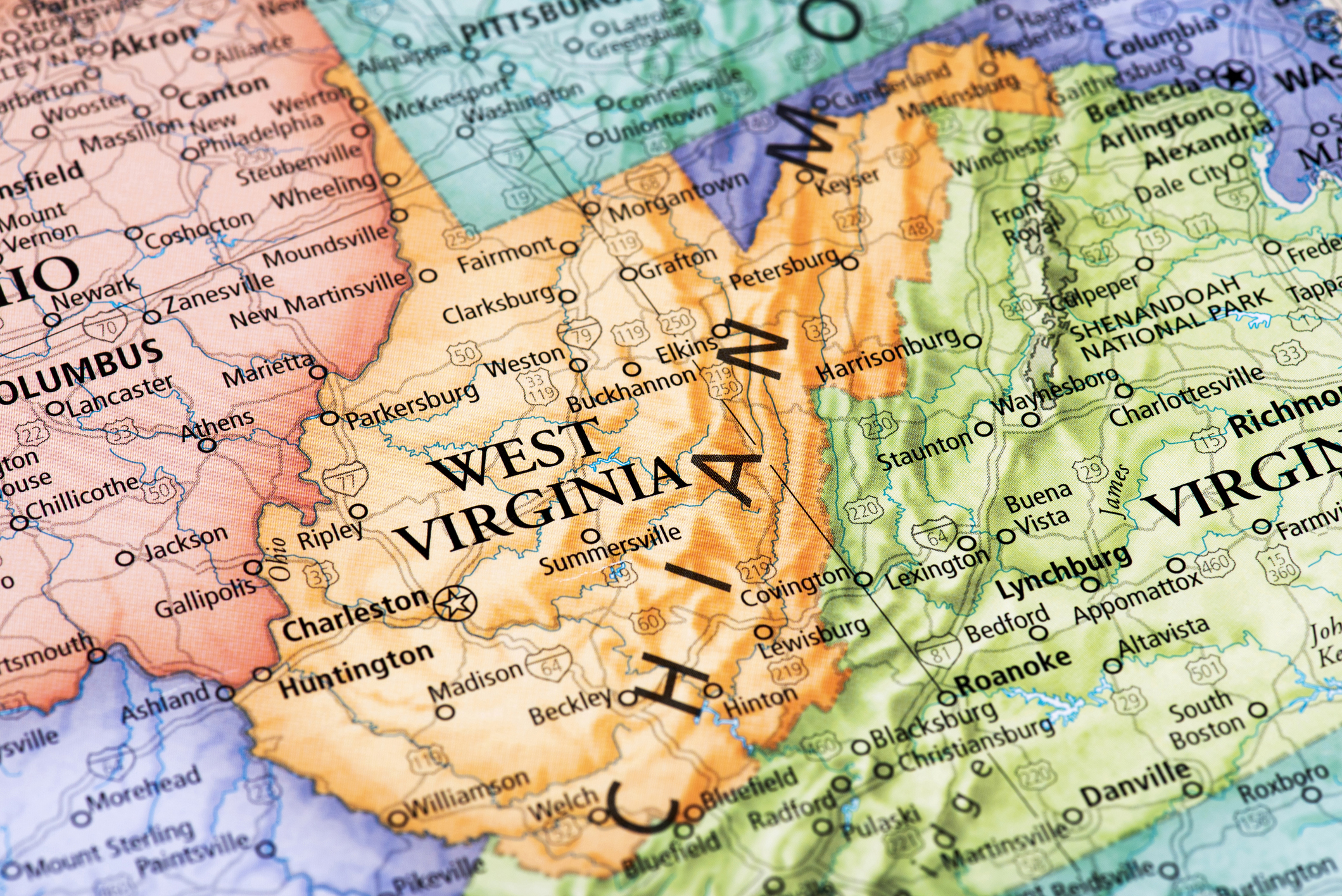The Minimum Savings You Need To Retire in All 50 States
Worried you haven't saved enough for retirement? Here are the average annual expenses and minimum savings amounts needed to get by in all 50 states.


Saving for retirement should be a lifelong pursuit, but life happens, and recessions, inflation, health issues and salary constraints can hamper the ability to save early and consistently.
A recent AARP survey found that 20% of respondents aged 50 and over had no retirement savings. Over 50% of current retirees without savings cited everyday expenses as the financial obstacle that prevented them from saving adequately, followed by housing costs (34%), debt payments (31%), unexpected expenses (18%) and health care expenses (16%).
If you are wondering if you have enough saved or are close to the minimum needed to retire in your state, a recent study from GOBankingRates looks at the annual cost of living, your annual expenditures after Social Security, and most importantly, how much savings you need to retire in all 50 states.
From just $107.88 $24.99 for Kiplinger Personal Finance
Become a smarter, better informed investor. Subscribe from just $107.88 $24.99, plus get up to 4 Special Issues

Sign up for Kiplinger’s Free Newsletters
Profit and prosper with the best of expert advice on investing, taxes, retirement, personal finance and more - straight to your e-mail.
Profit and prosper with the best of expert advice - straight to your e-mail.
The 30 states where you need the least savings to retire
If you are low on savings or simply want a lower cost of living in retirement, you might want to look at states such as Oklahoma, Alabama, Arkansas and Texas. Cities in these four states occupy 11 slots on our list of the 15 Cheapest Places to Live: U.S. Cities Edition. Texas has four cities on the list and has no income, estate, or inheritance taxes; these factors helped make Texas the 10th most tax-friendly state for retirees.
In fact, the 10 states with the lowest savings needs are prominently featured on our list of the cheapest places to live. Cities such as Birmingham, AL, and San Antonio, TX, are two of the best cities for retirees to consider for renting. They have quality hospitals and doctors, plenty of green space, and retiree-friendly amenities.
You might notice that Ohio and Pennsylvania share the same numbers for expenses and savings needs. That doesn’t mean underlying costs are comparable. For example, the average price of a home in Pennsylvania is $301,000, which is $52,400 more than in Ohio, where the average cost is only $248,600. Pennsylvania is one of the top 10 tax-friendly states for retirees, but it is also one of the most expensive states in which to die. In contrast, Ohio doesn't have an estate or inheritance tax.

30 Cheapest States | How much savings you need to retire: | Annual cost of living (total expenditures): | Annual Social Security income: | Annual expenditures after Social Security: |
|---|---|---|---|---|
1 West Virginia | $712,913 | $50,954 | $22,523.40 | $28,517 |
2 Kansas | $741,455 | $52,095 | $22,523.40 | $29,658 |
3 Mississippi | $753,472 | $52,576 | $22,523.40 | $30,139 |
4 Oklahoma | $759,481 | $52,816 | $22,523.40 | $30,379 |
5 Alabama | $773,000 | $53,357 | $22,523.40 | $30,920 |
6 Missouri | $776,005 (tie) | $53,477 | $22,523.40 | $31,040 |
6 Arkansas | $776,005 (tie) | $53,477 | $22,523.40 | $31,040 |
8 Tennessee | $791,027 | $54,078 | $22,523.40 | $31,641 |
9 Iowa | $797,035 | $54,319 | $22,523.40 | $31,881 |
10 Indiana | $810,555 | $54,859 | $22,523.40 | $32,422 |
11 Georgia | $813,559 | $54,980 | $22,523.40 | $32,542 |
12 North Dakota | $822,572 | $55,340 | $22,523.40 | $32,903 |
13 Michigan | $825,577 (tie) | $55,460 | $22,523.40 | $33,023 |
13 South Dakota | $825,577 (tie) | $55,460 | $22,523.40 | $33,023 |
15 Texas | $830,083 | $55,640 | $22,523.40 | $33,203 |
16 Nebraska | $833,087 | $55,761 | $22,523.40 | $33,324 |
17 Kentucky | $834,590 (tie) | $55,821 | $22,523.40 | $33,384 |
17 New Mexico | $834,590 (tie) | $55,821 | $22,523.40 | $33,384 |
19 Louisiana | $843,603 | $56,181 | $22,523.40 | $33,744 |
20 Montana | $851,114 | $56,482 | $22,523.40 | $34,044 |
21 Ohio | $864,633 (tie) | $57,023 | $22,523.40 | $34,585 |
21 Pennsylvania | $864,633 (tie) | $57,023 | $22,523.40 | $34,585 |
23 South Carolina | $869,140 | $57,203 | $22,523.40 | $34,766 |
24 Minnesota | $870,642 | $57,263 | $22,523.40 | $57,263 |
25 Wyoming | $872,144 | $57,323 | $22,523.40 | $34,886 |
26 Illinois | $873,646 | $57,383 | $22,523.40 | $34,946 |
27 North Carolina | $905,192 | $58,645 | $22,523.40 | $36,207 |
28 Maryland | $924,720 | $59,426 | $22,523.40 | $36,989 |
29 Wisconsin | $930,729 | $59,666 | $22,523.40 | $37,229 |
30 Nevada | $942,746 | $60,147 | $22,523.40 | $37,709 |
The 20 states where you need the highest minimum savings to retire
The states with the highest minimum savings needed to retire are well known for their extraordinary cost of living. These states fill out our rankings and harbor the 10 most expensive cities to live in and the 15 most expensive housing markets in the country.
While it's no surprise that the Polynesian paradise of Hawaii has the highest annual cost of living for retirees, it also boasts the lowest property tax in the country, with an effective rate of 0.32% and an average yearly tax payment of $4,180.
California (3), Connecticut (12), Massachusetts (2), New Jersey (6), New York (5), Rhode Island (11), Utah (15), and Vermont (7) are the worst states to retire in for taxes when you consider tax rates on retirement income and property tax bills. For instance, until recently, California was the only state that fully taxes military retirement pay. Starting with the 2025 tax year, retired military members will be able to claim a tax exclusion of up to $20,000 of military retirement pay. This exclusion is limited to taxpayers with AGI up to $125,000 for single filers and up to $250,000 for joint filers.
Colorado (16), Connecticut (12), Rhode Island (11), Utah (15), and Vermont (7) make up five of the nine states that still tax Social Security benefits. However, many of these states offer tax breaks on Social Security benefits if retirees meet the income requirements.
The contrast between the places with the lowest minimum savings needs, such as West Virginia, and those with the highest minimum savings, such as Hawaii, is stark. Retirees in Hawaii require approximately $1.5 million more than in West Virginia. Housing costs in Charleston, West Virginia, are 38.5% below average, while costs in Honolulu are 200.4% above average. Utilities are another example of where the states diverge on expenses. West Virginians pay 9.8% below the national average, and Hawaiians pay 94.4% above the national average.

20 costliest states | How much savings you need to retire: | Annual cost of living (total expenditures): | Annual Social Security income: | Annual expenditures after Social Security: |
|---|---|---|---|---|
1 Hawaii | $2,212,084 | $110,921 | $22,523.40 | $88,483 |
2 Massachusetts | $1,645,764 | $88,627 | $22,523.40 | $65,831 |
3 California | $1,612,716 | $86,945 | $22,523.40 | $64,509 |
4 Alaska (tie) | $1,292,753 | $74,147 | $22,523.40 | $51,710 |
4 New York (tie) | $1,292,753 | $74,147 | $22,523.40 | $51,710 |
6 New Jersey | $1,163,566 | $68,980 | $22,523.40 | $46,543 |
7 Vermont | $1,153,051 | $68,559 | $22,523.40 | $46,122 |
8 Washington | $1,145,540 | $68,259 | $22,523.40 | $45,282 |
9 Maine | $1,144,038 | $68,199 | $22,523.40 | $45,762 |
10 Arizona | $1,133,522 | $67,778 | $22,523.40 | $45,341 |
11 Rhode Island | $1,127,514 | $67,538 | $22,523.40 | $45,101 |
12 Connecticut | $1,116,998 | $67,117 | $22,523.40 | $44,680 |
13 New Hampshire | $1,113,994 | $66,997 | $22,523.40 | $44,560 |
14 Oregon | $1,091,462 | $66,096 | $22,523.40 | $43,658 |
15 Utah | $1,083,951 | $65,795 | $22,523.40 | $43,358 |
16 Colorado | $981,803 | $61,709 | $22,523.40 | $39,272 |
17 Florida | $977,296 | $61,529 | $22,523.40 | $39,092 |
18 Idaho | $971,288 | $61,289 | $22,523.40 | $38,852 |
19 Virginia | $948,755 | $60,387 | $22,523.40 | $37,950 |
20 Delaware | $944,248 | $60,207 | $22,523.40 | $37,770 |

Americans are not saving enough
Saving enough for retirement can be a challenge, and many people are falling behind. The median retirement savings for those ages 54-64 is $185,000, and the average balance is $538,000. For those aged 65-74, the median retirement savings is $200,000, and the average is $609,000 according to The Federal Reserve Survey of Consumer Finances 2022.
Age group | Median savings | Average savings |
|---|---|---|
Under 35 | $18,880 | $49,130 |
35-44 | $45,000 | $141,520 |
45-54 | $115,000 | $313,220 |
55-64 | $185,000 | $537,560 |
65-74 | $200,000 | $609,230 |
When you look at all of the numbers, the average retiree will be dependent on Social Security to make ends meet. This is a dicey strategy as the Social Security trust fund will become insolvent in 2033. At that point, the fund's continuing income is expected to fund just 77% of scheduled benefits resulting in your benefits being reduced by 23%.
Methodology: In order to find out how much you need to retire in your state, GOBankingRates found the annual cost of expenditures for a retired person in each state by multiplying the “65 year and older expenditures” from the Bureau of Labor Statistics’ 2023 Consumer Expenditure Survey by the cost-of-living index for each state from the Missouri Economic Research and Information Center’s 2024 Q3 cost-of-living series. To find how much money a retired person would need to save, we divided each state’s annual expenditures, minus the annual Social Security income (sourced from the Social Security Administration’s Monthly Statistical Snapshot, November 2024), by .04, assuming drawing down savings by 4% percent each year to pay for living expenses. All data was collected on and is up to date as of Jan. 2, 2025.
Related Content
Profit and prosper with the best of Kiplinger's advice on investing, taxes, retirement, personal finance and much more. Delivered daily. Enter your email in the box and click Sign Me Up.

Donna joined Kiplinger as a personal finance writer in 2023. She spent more than a decade as the contributing editor of J.K.Lasser's Your Income Tax Guide and edited state specific legal treatises at ALM Media. She has shared her expertise as a guest on Bloomberg, CNN, Fox, NPR, CNBC and many other media outlets around the nation. She is a graduate of Brooklyn Law School and the University at Buffalo.
-
 How Much a $100k Jumbo CD Earns You
How Much a $100k Jumbo CD Earns YouYou might be surprised at how fast a jumbo CD helps you reach your goals.
-
 How Charitable Trusts Benefit You and Your Favorite Charities
How Charitable Trusts Benefit You and Your Favorite CharitiesThese dual-purpose tools let affluent families combine philanthropic goals with advanced tax planning to generate income, reduce estate taxes and preserve wealth.
-
 A 5-Step Plan for Parents of Children With Special Needs
A 5-Step Plan for Parents of Children With Special NeedsGuidance to help ensure your child's needs are supported now and in the future – while protecting your own financial well-being.
-
 Here's How Much You Can Earn with a $100,000 Jumbo CD
Here's How Much You Can Earn with a $100,000 Jumbo CDYou might be surprised at how fast a jumbo CD helps you reach your goals.
-
 A Financial Planner Takes a Deep Dive Into How Charitable Trusts Benefit You and Your Favorite Charities
A Financial Planner Takes a Deep Dive Into How Charitable Trusts Benefit You and Your Favorite CharitiesThese dual-purpose tools let affluent families combine philanthropic goals with advanced tax planning to generate income, reduce estate taxes and preserve wealth.
-
 A 5-Step Plan for Parents of Children With Special Needs, From a Financial Planner
A 5-Step Plan for Parents of Children With Special Needs, From a Financial PlannerGuidance to help ensure your child's needs are supported now and in the future – while protecting your own financial well-being.
-
 How Financial Advisers Can Best Help Widowed and Divorced Women
How Financial Advisers Can Best Help Widowed and Divorced WomenApproaching conversations with empathy and compassion is key to helping them find clarity and confidence and take control of their financial futures.
-
 Your Guide to Buying Art Online
Your Guide to Buying Art OnlineFrom virtual galleries to social media platforms, the internet offers plenty of places to shop for paintings, sculptures and other artwork without breaking the bank.
-
 I'm 59 With $1.7 Million Saved and Just Lost My Job. Should I Retire at 59½, or Find New Work?
I'm 59 With $1.7 Million Saved and Just Lost My Job. Should I Retire at 59½, or Find New Work?We asked professional wealth planners for advice.
-
 A Wealth Adviser Explains: 4 Times I'd Give the Green Light for a Roth Conversion (and 4 Times I'd Say It's a No-Go)
A Wealth Adviser Explains: 4 Times I'd Give the Green Light for a Roth Conversion (and 4 Times I'd Say It's a No-Go)Roth conversions should never be done on a whim — they're a product of careful timing and long-term tax considerations. So how can you tell whether to go ahead?
-
 A 4-Step Anxiety-Reducing Retirement Road Map, From a Financial Adviser
A 4-Step Anxiety-Reducing Retirement Road Map, From a Financial AdviserThis helpful process covers everything from assessing your current finances and risks to implementing and managing your personalized retirement income plan.